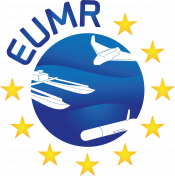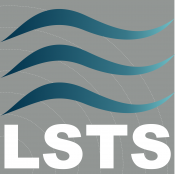Exhibitors
DGPM - Directorate-General for Maritime Policy
The Directorate-General for Maritime Policy (DGPM) is responsible for developing, evaluating and updating the National Maritime Policy (National Ocean Strategy), and monitoring the implementation of the Integrated Maritime Policy of the EU in Portugal.
DGPM is a Ministry of Sea Entity, also coordinates international affairs within the Ministry, and the main financial instruments related to maritime policy: the European Maritime and Fisheries Fund (EMFF), the European Economic Area Financial Mechanism (EEA Grants) and the Blue Fund (Fundo Azul).
Within the Portuguese Government, DGPM is responsible for the coordination of cross-sectoral policies related to the Ocean between ministries, via the Inter-Ministerial Commission for Maritime Affairs (CIAM).
DGPM is also responsible for developing and coordinating communication, awareness and the mobilization of society to the importance of the Ocean, and for Ocean literacy initiatives.
Escola Secundária de Santa Maria Maior
Escola Secundária de Santa Maria Maior is located on the outskirts of Viana do Castelo, a small town in the north of the country. It is part of Agrupamento de Escolas de Santa Maria Maior, covering a primary school, a school teaching from the fifth to the ninth grades and our school, which guarantees secondary education. Our school is attended by 877 students, taught by 92 teachers. The group of schools which form the "Agrupamento" are attended on the whole by 1664 students, taught by 182 teachers. Our students range from ages 6 to 18. The graduates show quite high results in the final national exams, as a matter of fact above the national average.
The aim of our school is to educate active, autonomous and responsible European citizens who value the national and the European heritage.
Besides academic progress and a focus on global learning of foreign languages, our school is willing to participate in international projects, as they are an inestimable source of knowledge, which enhances individual development.
Our students are very willing to be part of exchange programs which make them aware of their European citizenship.
Because of the serious economic crisis in our country, most part of the students have no such possibility within their families and would highly benefit from experiencing the cultural diversity offered by this project. It will allow them to be aware of the social, educational and cultural diversity surrounding them as European citizens. This is the basis for consistently taking active part in future life and decisions based on acquired knowledge and experience.
Protecting and preserving our national identity and heritage, alongside with educating active and effective citizens, who respect each other's individuality and culture and become tolerant human beings are our most important goals, as partners in this partnership.
EUMarineRobots
The marine-robotics industry is growing rapidly and is a crucial high-value/high-cost sector with considerable entry barriers to R&D. Currently, Europe leads in many aspects of maritime, but lacks well integrated and coordinated oceanic robotic infrastructure or presence. It’s in this challenging environment that EUMarineRobots (EUMR) emerges.
The main objective of the EUMR project is to open up key national and regional marine robotics research infrastructures (RIs) to all European researchers, from both academia and industry, ensuring their optimal use and joint development to establish a world-class marine robotics integrated infrastructure.
The EUMR consortium comprises 15 partners from 10 countries who, collectively, can deploy a comprehensive portfolio of marine robotic assets with required associated support assets and expertise.
Our proposal is to build a network of marine robotics to help ensure that the EU remains a world-leader in ocean science and engineering, with a thriving maritime industry.
To do so we will, among other activities, have a series of Trans-national access activities (TNA) with the focus of: providing a coherent framework for stakeholders to gain access to both the “standard” and the “developing” capacities of the RI; providing access to appropriate levels of training and best-practices, to build sustainability by educating the next generation of practitioners; providing access to experimental activities proposed by external partners or use-cases that are chosen to provide a broad cross-section of experimental opportunities for end-users.
Laboratório de Sistemas e Tecnologia Subaquática
The Laboratório de Sistemas e Tecnologia Subaquática (LSTS) is an interdisciplinary research laboratory established in 1997 with researchers drawn from Electrical and Computer Engineering, Mechanical Engineering and from Computer Science.
The LSTS is specialized on the design, construction, and operation of unmanned underwater, surface and air vehicles and on the development of tools and technologies for the deployment of networked vehicle systems.
In the last 20 years researchers from the LSTS have successfully fielded unmanned air, ground, surface and underwater vehicles in the Atlantic and Pacific oceans, and also in the Mediterranean sea. These vehicle systems implement the LSTS control architecture with the help of the LSTS Neptus-IMC-Dune software toolchain. Neptus is a distributed command, control, communications and intelligence framework for operations with networked vehicles, systems, and human operators. IMC is a communications protocol that defines a common control message set understood by all types of LSTS nodes. DUNE is the system for vehicle on-board software. It is used to write generic embedded software at the heart of the vehicle, e.g. code for control, navigation, or to access sensors and actuators. It provides an operating-system and architecture independent C++ programming environment for writing efficient real-time reactive tasks in modular fashion. The toolchain has support for Disruptive Tolerant Network (DTN) protocols.
Nortek
Nortek designs, develops and produces scientific instruments that apply the Doppler principle to underwater acoustics in order aid in underwater navigation or to measure water in motion, such as currents and waves. We provide truly innovative, robust, and accurate instruments, backed up by advanced software and comprehensive support to ensure customers maximize value from their measurements.
Ocean Sonics
Ocean Sonics designs and manufactures the icListen Smart Hydrophone, a compact stand-alone sensor that can be used to record, process and store high quality sound data. Long term deployments for studying soundscapes, marine mammals, ship noise etc is now possible with the NEW Acoustic Recorder that can store up to 2 T of data. You can also stream real-time calibrated data via cable, from an array of synchronized hydrophones. Use our software for detecting clicks, events and classify, localize and track marine mammals.
Ocean Sonics has developed accessories such as, subsea battery packs, drifting buoys, telemetry solutions and cables for real-time data analysis and other products to make your data collection and analysis simple and easy to use.
OceanScan - MST
OCEANSCAN - Marine Systems & Technology, Lda, is a Portuguese company devoted to the development, manufacturing and commercialization of small-sized, one-man portable Autonomous Underwater Vehicles (AUVs). The company's flagship product – the LAUV (Light Autonomous Underwater Vehicle) – is an underwater robot designed to answer environmental, inspection and security applications. The LAUV is an open system that relies on a set of open source software tools (both on-board and off-board) specifically designed to enable end-user developments and interoperability with third-party systems.
OceanScan-MST offers flexible, turnkey solutions based on technology originally developed and matured in close cooperation with national academic, scientific and military institutions. This approach lead to the development of a set of innovative, effective and reliable capabilities implemented in a user-friendly autonomous underwater platform that provides a high degree of operation readiness relying on minimal logistics requirements. The company's commitment to abide by these guidelines favoured an increasing acceptance from demanding market sectors.





